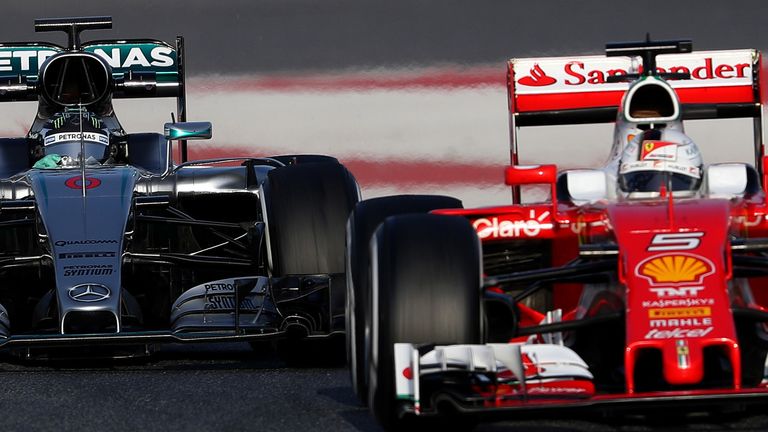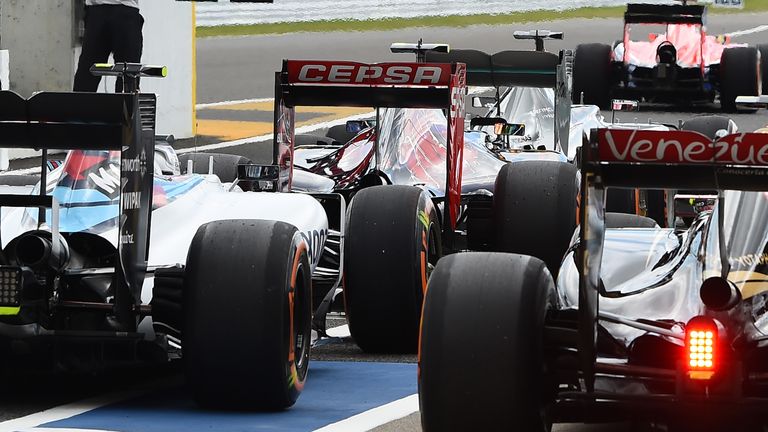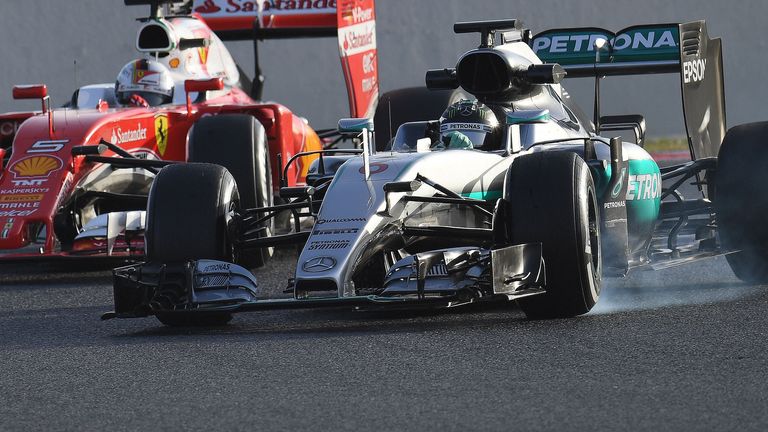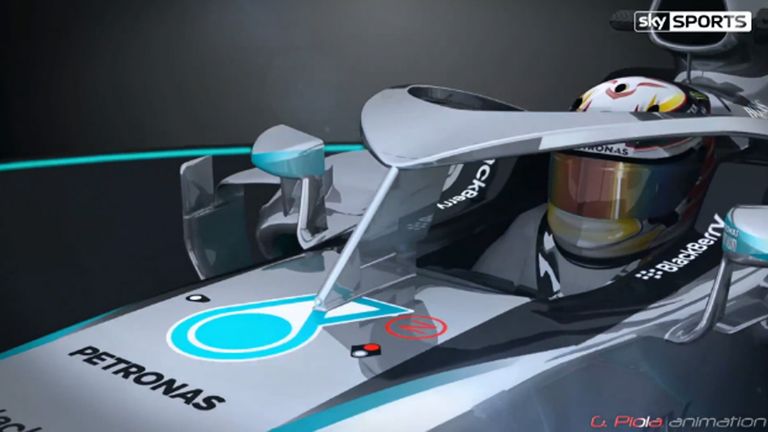F1 qualifying set for 2016 shake-up with more regular eliminations
'Musical chairs' elimination system agreed by F1 bosses; 'halo' head protection concept receives backing for 2017 introduction
Saturday 5 March 2016 10:58, UK
F1's knockout qualifying system is to undergo a radical shake-up - potentially as early as the new 2016 season - in a bid to introduce more unpredictability into race weekends.
The FIA has confirmed the F1 Commission unanimously voted to revamp the current three-part Saturday format when it met to discuss future rules in Geneva on Tuesday.
The governing body has also announced plans to introduce 'some form of cockpit protection' for 2017 with the halo concept 'currently the preferred option'.
New bodywork regulations will also be introduced for next season in order to 'create more exciting cars, delivering additional downforce to increase speeds and lower lap times.'
Qualifying to be revamped
F1 has held three-part knockout qualifying sessions since 2006, and while the structure of Q1, Q2 and Q3 sessions will be retained, there will be more regular eliminations during the hour of running.
Under the proposal, Q1 would last for 16 minutes and after seven minutes the slowest driver would be knocked out and forced to return to the pit lane. Six more drivers would then be eliminated at 90-second intervals before the session concluded.
With 15 drivers left in the running, a 15-minute Q2 session would then take place with the next slowest driver knocked out after six minutes followed by four more at 90-second intervals.
Eight rather than 10 drivers would then take part in the final Q3 session to determine pole position. This phase would increase from 10 to 14 minutes in length but the driver with the slowest time would be eliminated after five minutes and then one more every 90 seconds.
The fastest two drivers would then be left to contest pole in the final minute and a half of the session.
"The idea really is that it will be the same as qualifying in wet conditions," said F1 supremo Bernie Ecclestone. "Maybe one or two of the hot-shoes aren't going to make it [to the front]. So we won't see the obvious on the front of the grid."
The FIA stated the changes are "being evaluated for introduction, potentially as soon as the beginning of the 2016 season". Provided the plans go ahead after further analysis, they will have to be ratified by the World Motor Sport Council on March 4 to be included for the new season which begins in Australia on March 20.
While the current qualifying format has been deemed a success over the past decade, it appears team chiefs believe more constant eliminations during the hour will increase the chances of creating more unpredictable grids with driver or team mistakes more heavily penalised.
Sky F1 commentator David Croft tweeted: "Can't say whether the new qualy format will be a change for the better until we get the full details but I do wonder why it needed a change?"
With the rules necessitating that cars are on track more often during the hour, the prospect of cars running into traffic while navigating past eliminated cars on their way back to the pits would increase.
"So, musical chairs qualifying it's to be?" said Sky F1 analyst Mark Hughes. "Stewards are going to need eyes in backs of heads to see every single blocking move, esp Q1."
Ted Kravitz is not convinced the idea will succeed in ensuring the fastest cars are on track more often during the hour.
"I wonder whether the F1 bosses on the Commission pay attention to how F1 cars produce quick qualifying times," he said. "The best times are set when the tyre is on its first or second hot lap. After that, the best performance of the tyre is gone and the lap times don't improve.
"So the reality is that teams will not just go out onto the track and keep going round and round to set quicker times. They'll go out, set what they hope is the quickest time on a fresh tyre, come back in, and let the slower cars get dropped one by one as the session progresses."
In addition to rules for the forthcoming season, the Geneva meetings were aimed at establishing a resolution on regulations for 2017 amid attempts to make cars faster and more dramatic-looking. The deadline has been pushed back to April 30, but agreement has been reached on increases to the width and weight of cars.
"Future F1' needs a masterplan, not bubble bursts of random ideas that find a way through the many faceted and largely impenetrable systems," said Martin Brundle.
However, in a move that is likely to be welcomed by the majority of drivers, the Commission agreed on the introduction of 'some form of cockpit protection' from 2017 with the Mercedes-inspired 'halo' concept set to be adopted.
The first race of the 2016 F1 season, the Australian GP, is exclusively live on Sky Sports F1. The race in Melbourne starts at 5am on Sunday March 20.







